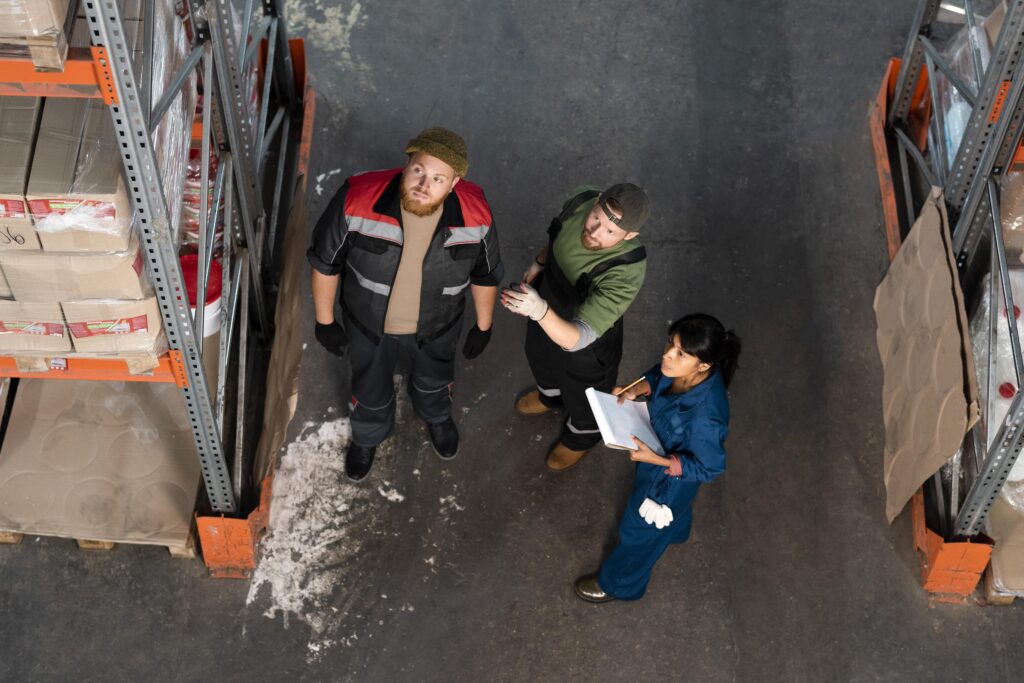In today’s volatile landscape, a single disruption can trigger a full-blown crisis. Building supply chain resilience is no longer optional; it’s a core strategic imperative. Without it, you are one unexpected event away from chaos.
One Disruption Away: The Urgent Need for a Resilient Supply Chain
In the spring of 2023, a major electronics OEM faced an unforeseen embargo on a specialty raw material. Within days, production slowed, order backlogs surged, and freight costs soared. The financial and reputational cost dwarfed the savings the company had previously gained from just-in-time (JIT) inventory.
This scenario is increasingly common. The confluence of climate events, political instability, and pandemics means today’s supply chains operate in a state of constant risk. As McKinsey notes, while nearly half of executives say they know their tier-1 suppliers, only 2% understand risks beyond tier-3. (mckinsey.com)
Supply chain resilience is not about avoiding disruptions; it is about withstanding, adapting, and recovering faster and smarter. For global industrial firms like MECHESOL and our clients, resilience is now a strategic imperative.
This article presents a robust resilient supply chain framework covering design, technology, governance, and operations. You will find a practical roadmap to transform your supply chain from reactive to resilient.
Why Supply Chain Resilience Matters More Than Ever
Rising Complexity and Volatility
- Disruptive events are increasing in both frequency and scale (for example, climate disasters, pandemics, geopolitical tensions).
- Supply chains are more interconnected and global; a localized event can ripple widely (the “butterfly effect”).
- Traditional efficiency-driven structures such as minimal buffers and single sourcing are brittle in volatile conditions.
Efficiency vs. Vulnerability Trade-off
Efficiency (lower inventory, lean operations) has long dominated supply chain design. However, this efficiency often creates critical vulnerabilities. A more resilient supply chain may carry extra cost in stock or redundancy, but the cost of a major supply chain disruption almost always outweighs this investment.
Resilience as a Competitive Differentiator
Companies that can maintain service levels, avoid stockouts, and recover quickly during disruptions gain market trust and a competitive edge. Those that falter lose clients, reputation, and profitability. As one study states, “resilience is a competitive imperative, not a supplemental feature.” (link.springer.com)

The 4 Core Pillars of a Resilient Supply Chain Framework
To systematically build supply chain resilience, we can group strategies into four core pillars:
| Pillar | Purpose | Typical Strategies |
| Redundancy and Buffering | Absorb shocks without collapse | Dual or multiple sourcing, safety stock, backup capacity |
| Flexibility and Agility | Adapt structure rapidly | Modular network design, reconfigurable production, alternate routes |
| Visibility and Monitoring | Early detection and control | Control towers, end-to-end visibility, dashboards, risk heatmaps |
| Responsive Recovery and Playbooks | Swift, predetermined reaction | Crisis playbooks, war rooms, cross-functional teams, scenario plans |
Let’s explore each more deeply.
1. Redundancy and Buffering
Redundancy ensures that if one node fails, alternatives can pick up the slack. Some options include:
- Dual or multiple sourcing: Avoid relying on a single supplier or location for key components.
- Strategic safety stock or buffer inventory: Maintain reserves for critical parts or commodities.
- Backup logistics assets or capacity: Plan alternative routes, carriers, or transport modes.
- Alternate facilities or spare capacity: Use backup plants that can ramp up if primary sites are blocked.
The tradeoff is extra cost and complexity, but a disruption can cost far more.
2. Flexibility and Agility
Flexibility allows the supply chain to shift under stress:
- Modular network design: Create flows so segments can be reconfigured or substituted.
- Reconfigurable production lines: Enable shifts between multiple sites.
- Alternate routing and dynamic logistics planning: Allow quick rerouting of shipments.
- Flexible contracts: Include terms that allow shifting volumes or sourcing temporarily.
3. Visibility and Monitoring
You cannot respond to a supply chain disruption you cannot see. Real-time awareness is key.
- Supply chain control tower: Centralized hub monitoring alerts, disruptions, and KPIs.
- Risk heat maps and early-warning systems: Assess suppliers or regions by exposure.
- Supplier dashboards: Track lead times and capacity constraints.
- Data integration and transparency: Link ERP, procurement, and logistics systems.
McKinsey emphasizes embedding resilience metrics into KPIs so decision-making constantly balances efficiency and vulnerability. (mckinsey.com)
4. Responsive Recovery and Playbooks
A crisis plan is useless without practice or clarity:
- Crisis playbooks: Predefined decision trees, fallback options, roles, and escalation paths.
- War rooms and command centers: Cross-functional teams ready to mobilize.
- Stress tests and scenario planning: Regularly simulate disruption scenarios.
- Post-mortem reviews: Use every event as a source of improvement.
How Technology Enables Supply Chain Resilience
Modern digital tools are essential enablers of supply chain risk management.
Predictive Analytics and AI in Risk Management
By training models on past disruptions, market signals, supplier performance, and external data such as weather or geopolitical events, AI can forecast potential disruptions or lead-time spikes. This gives teams time to prepare or adjust. (link.springer.com)
Real-Time Monitoring with IoT
IoT sensors on assets, containers, and transport routes provide real-time data such as location, temperature, humidity, and delay alerts. This situational awareness enables rapid response.
In recent studies, the coupling of AI and IoT (AIoT) has been identified as a key enabler of resilient supply chains. (arxiv.org)
Digital Twins for Supply Chain Simulation
Digital twins simulate your supply chain under various stress scenarios such as port closure or factory outage, allowing you to test “what-if” decisions in a virtual model before applying them live.
Risk Engines and Recommender Systems
Emerging research explores using recommender systems (similar to those in e-commerce) to suggest alternate sourcing or routing responses when disruption triggers occur. (arxiv.org)
Governance and Culture: The Human Side of Resilience
Supply chain resilience is not just a technical problem; it is an organizational one.
Dedicated Governance and Leadership
- Appoint a senior leader (like a Chief Resilience Officer) and create an oversight committee.
- Create oversight bodies or committees with representation across procurement, operations, logistics, IT, and risk management.
Cross-Functional War Rooms and Crisis Teams
When disruption strikes, decisions must cut across silos. War rooms with clear roles ensure coordinated response.
Culture, Training, and Drills
- Run simulation drills and tabletop exercises regularly.
- Train teams to respond under stress.
- Build a culture of learning and adaptability.
Decision Rights and Escalation Protocols
Clearly define which roles can make quick decisions such as rerouting freight or shifting sourcing during crisis, and when escalation is needed.

Case Study: Lessons in Supply Chain Resilience
The Puget Sound region pilot on supply chain resilience offers a practical example. Prior to the COVID-19 crisis, a 2019 public–private initiative simulated supply chain disruptions such as earthquakes in the region and formed supply chain coalitions and playbooks. When the pandemic struck, those frameworks were mobilized, enabling effective grocery flow management, stakeholder coordination, and supply continuity compared to other regions. (cna.org)
Key lessons:
- Early coordination between public and private stakeholders strengthens resilience.
- Predefined frameworks and relationships pay off during crisis.
- Visibility, trust, communication, and governance matter as much as inventory buffers.
Another example: Boeing reported that its defense supply chain suppliers achieved 80 % on-time delivery in 2023 amid supply chain pressure, up from 75%. This highlights the ongoing need for continuous supplier performance improvement. (reuters.com)
A Phased Roadmap to Build Your Supply Chain Resilience
Here’s a phased roadmap to implement your resilient supply chain framework:
| Phase | Objective | Key Actions |
| Phase 0 – Assessment | Understand current resilience | Resilience maturity assessment, risk mapping, KPI baselines |
| Phase 1 – Quick Wins | Build momentum and show value | Pilot dual sourcing, control tower, early-warning alerts |
| Phase 2 – Scale | Expand resilience across network | Extend to deeper tiers, integrate across IT, full visibility |
| Phase 3 – Continuous Evolution | Adapt and optimize | Stress tests, feedback loops, evolving playbooks, simulation |
Milestones and Timing
- Months 1–3: Risk mapping, resilience assessment, pilot identification
- Months 4–9: Execute pilot projects, deploy dashboards, refine process
- Months 10–18: Expand to core product lines and supplier tiers
- Year 2+: Continuous review, simulation, and dynamic adaptation

KPIs to Measure Supply Chain Resilience
Measuring resilience is challenging but essential. One study identifies dozens of metrics spanning robustness, flexibility, adaptability, visibility, and collaboration. (odr.chalmers.se)
| Metric / KPI | What It Measures | Why It Matters |
| Time to Recover (TTR) | Time taken for operations to return to normal | Lower is better |
| Time to Survive (TTS) | Maximum duration the system can survive in degraded mode | Buffer capacity measure |
| Fill Rate under Disruption | % of orders fulfilled despite disruption | Resilience in action |
| Supplier Risk Score / Risk Index | Composite score across suppliers (financial, geopolitical, lead-time risk) | Focus attention where needed |
| Visibility Depth (Tier-n) | Percentage of spend or parts with visibility in tier-1, 2, and 3 | Reduces surprises |
| Redundancy Ratio | % of components with multiple sources | Indicates backup options |
| Incident Response Time | Time from alert to action initiation | Measures responsiveness |
| Audit Closure / Action Completion Rate | % of risk items addressed and closed | Reflects discipline |
Resilience metrics should be integrated into your broader supply chain dashboard alongside cost, quality, and delivery metrics.
Common Challenges and Tradeoffs in Building Resilience
Implementing supply chain resilience is not without challenges:
- Cost vs. resilience: Buffers, redundancy, and alternate routes increase cost.
- Complexity: Managing multiple sources adds administrative burden.
- Data quality: Poor data undermines supply chain visibility.
- Change resistance: Teams focused on cost optimization may resist resilience initiatives.
- Deep-tier risks: Many disruptions originate beyond tier-3 suppliers.
A balanced and incremental approach is most effective. Start with high-impact areas, pilot, learn, and scale.

Conclusion: From Resilient Design to Competitive Advantage
In a world of accelerating disruption, supply chain resilience must become a core design competency. The most successful organizations will be those that anticipate, adapt, and recover faster than their peers.
For MECHESOL and its clients, the path forward is clear:
- Assess your current resilience maturity
- Pilot high-priority resilience initiatives
- Integrate resilience KPIs into operations
- Institutionalize governance, drills, and learning cycles
MECHESOL’s global engineering and supply chain teams specialize in designing resilient, digitally-enabled systems that can withstand the next shock.
Let’s turn ideas into impact with the right strategy behind them.
For product development and resilient supply chain solutions:
📩 services@mechesolco.com
Build your entrepreneurial mindset with MESP:
📩 mesp@mechesolco.com
🌐 Explore more at www.mechesolco.com



